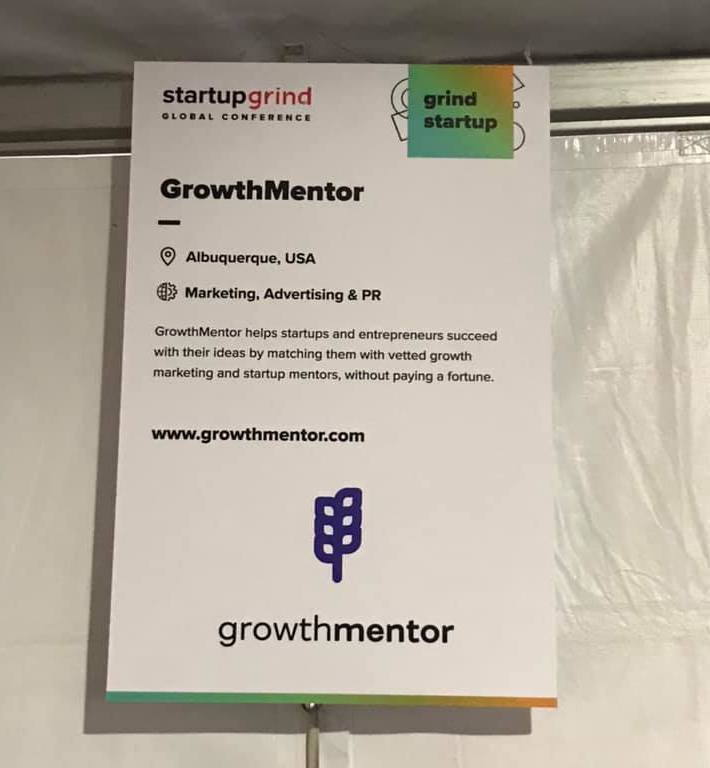One year in: The 10 lessons I learned bootstrapping my content agency
In October 2021, I published an article on GrowthMentor: 10 avoidable startup mistakes I wish I could undo. At the time, I was three months into life as a startup founder. I’d made some hefty mistakes with my content agency but experienced some path-changing lessons that routed me to where I am today.
The lessons I had under my belt were:
- Hire talent you know
- Be transparent with what you can afford
- Don’t get greedy
- Say no to contracts that don’t serve you
- Own your niche
- Find your USP and shout about it
- Hire outside of your skillset
- Ask for help
- Look after your clients before acquiring new ones
- Shoot your shot & share your journey
I stand by all of them.
Now, I’m one year in. One year as a founder, one year bootstrapping a startup, and one year trying to do more with business than just making money.
What’s changed?
- My team of two has grown to a full-time team of four
- My part-time workforce has grown from zero to ten
- Our client list has grown from 7 to 12
- We’ve now screened over 200 SaaS writers and have a core talent base of just under 60
We’ve scaled at a pace I’ve been comfortable with—asides from last month, in which DSLX somehow managed to onboard four new clients and grew 50% from one month to the next. Don’t ask!
And I’ve learned a lot in getting from point B to C. So, what exactly have I learned in this last year? Well, I’m pleased you asked.
10 Lessons every self-funded startup founder should know
1. Know your red flags
Know a red flag when you see one—this goes for outside of business too, but let’s stick to the topic. I had a nightmare discovery call. In which, the marketing director of this prospective client was hell-bent on playing the villain. It got to the point that they made me sweat.
They were firing question after question at me—most of which were rude, discriminative, or an insult to my work. Upon explaining how DSLX worked, they iced the cake by saying they wanted to “screen” their DSLX account manager.
They were raising every red flag possible around payment terms, a lucrative scope of work, and—most importantly—culture. It was not the type of partnership I wanted to bring into my company, and there was no way I wanted to subject my team to similar treatment.
So, despite the potential contract being one of our biggest ones to date at the time, I said we wouldn’t be working with them because I didn’t see us as a culture fit. They never replied to my email—case in point.
Know your red flags, stick by the culture you’re building, and don’t go for anything that doesn’t fit right with you—no matter the price tag. Your mental health (and your teams’) is not worth it.
2. Upskill your talent with mentoring schemes
Next up is to upskill your talent. So far, we’ve always hired juniors in-house and worked on building on the knowledge they come to the door with. We often work with graduates and actually have a successful internship program with my old University: Falmouth. We also work with non-native speakers and have helped shape them into close-to-flawless writers.
This doesn’t come without work, but the investment you put into your people will often see them return investment in your business.
A few mentoring schemes we use are:
- Skills-based courses
- Reverse mentoring practices
- Peer-to-peer editing
- Custom in-house courses
You may be wondering: what is reverse mentoring? And I asked the same the first time I heard it. It essentially pairs highly-skilled workers with low-knowledge but high-ambition workers and specifically spans across age gaps: young people mentoring older people.
It often happens in our industry as older players have the knowledge but lack the tech savviness or SEO awareness to share their know-how with a wide audience. We then need to educate them without insulting them, and stand by our knowledge as leaders in our field.
It’s a tricky ground to navigate but needs to be done to see results in your work. Stick to what you know, and educate stakeholders just enough to win their buy-in behind your strategic decisions.

On the terrace of a coworking space with my first Barcelona-based team member!
3. Get your hands “dirty”
As a founder you don’t have to do everything, but you need to be able to do most things. Even if you’re not doing most things all the time. We’re a small team at DSLX, and I’ve had occasions over the last year when the whole team went down from one day to the next. I needed to step in and ensure we kept delivering our work.
Of course, this was a tough time for me. However, I’m so thankful that even as the founder of the content agency, I’m still regularly writing. It keeps my craft sharp and enables me to handle situations I couldn’t possibly plan for.
4. You’re only as strong as your processes & workflows
Point three brings me to point four. You’re only as strong as those processes and workflows you create—and they need to be built for scale.
At the beginning of this article, I mentioned we onboarded four new clients from one month to the next. For a small team like us, that’s a lot. However, we wouldn’t have had the opportunity if we weren’t ready, and I knew our processes and workflows were solid enough to cope with the influx of work. I would not have said the same thing in month three of DSLX.
Ps. build templates for every process, workflow, and email you regularly use; you’ll thank me later!
5. Check, sign, and stick to contracts
I’ll say it louder for the people at the back. Check 👏 Sign 👏 and STICK to 👏 your 👏 contracts 👏.
- I cannot tell you the number of times I’ve sent out a contract with a typo from copying it over from an old client deal.
- I cannot tell you the number of times I’ve not seen my teams’ names on our work, only to realize I didn’t put a ghostwriting clause in the contract.
- I cannot tell you the number of times I’ve seen scope creep and allowed it, only for it to carry on creeping.
Double-check and respect your contracts. No matter who your client is, where they came from, or how much you trust them. Contracts manage business expectations, set a standard of professionalism and cover your back if you ever end up in a sticky situation.
6. Accept that churn will happen
Clients come and go. In SaaS, churn is going to happen. I think we’ve had three clients leave us in the last year. Learn to accept that, and don’t take it personally.
Business is business, and clients have left us for various reasons beyond our control and irrelevant to our quality of work. Ensure you learn why they’re leaving, knowing this has presented us with new product offerings we’re now running.
At the same time, sometimes we’ve had to do the churning. There may come a moment when a client’s budget may no longer makes financial sense for where your business is at. That’s okay, be honest with your clients; if they don’t have the budget to hire your services now, leave the door open for the future.
7. Take ownership of your mistakes
My mistakes are my team’s mistakes, and my team’s mistakes are mine. We reflect DSLX and the brand we are building. Together we’ve made a fair few mistakes over the past year. Some major and some barely noticeable if it weren’t for our hawk-like attention to detail.
Every time we’ve owned up to them and done everything in our power to correct them. Owning up to your mistakes will earn you more respect than pretending they didn’t happen. We’re overly apologetic—perhaps that’s the British in me— but I find this quality has helped us build trust and win further work.

My setup from one of my favorite cafes to work at, in Barcelona
8. Your team is always right
In hospitality, your customer is always right. In agency life, your team is always right. Have their back, and let them know that you have their back. My team has had moments where they’ve felt insecure or that something is up, and I never want them to doubt their intuition or feel like they can’t share what they’re going through with me.
Lift your team up and let them know you’re always on their side. It comes from transparent leadership and voicing fears or feelings you think they may have before they do. 90% of the time, I’ve been right. I’ve seen my team members physically relax on calls as we dive into what I know could have been a very uncomfortable situation.
Support them, appreciate them, and voice these things regularly—especially if you’re running a remote, asynchronous team. Body language can be hard to read when they can’t see it!
Yes, I am their boss. But we are all still just humans, no matter the title we have in front of our names. Side with and support your team members—human-to-human.
9. Find ways to reward your people that you can afford
I really struggled with this one. In my first article, one of my lessons was to be transparent with what you can afford. Which we still are. But, in our business model, with such large contracts contributing to a huge portion of our business income, it can honestly be tough to dedicate to higher salaries knowing that a large contract can churn.
I never want to be in a position where we can’t afford our core workforce—I’ve been let go because of this in the past from companies and don’t want to see my own workforce go through the same experience.
So, I’ve found ways to work around this. I still want to be financially able to show appreciation to the team.
At DSLX, every account manager takes a portion of the profits on any account they manage. This encourages them to work on client retention, minimize out-of-house spending, and financially rewards them when work increases, and we’re in a financial position to show that. It’s an alternative solution I’ve found works for the business in this early stage of growth.
10. Trust the ebb and flow of bootstrapped growth

We’re all about the positive manifesting!
Last, but not least, trust the ebb and flow of bootstrapped growth. Not having funding means everything is self-funded, which can be scary—if you let it. Don’t waste energy worrying or being scared. Instead, work on things that are within your control and take back energy from those areas that you can’t control.
Clients will go, but more will come if you do your job well. Trust in your ability and the knowledge that you’re doing things well. Dance with the ebb and flow of bootstrapped business growth. Flourish at a pace that embraces steps backward as much as forward. Keep bootstrapping!
Thanks for reading and helping me live my Billie Eilish fantasy. Hopefully, I’ll see you next year!
Ray.





